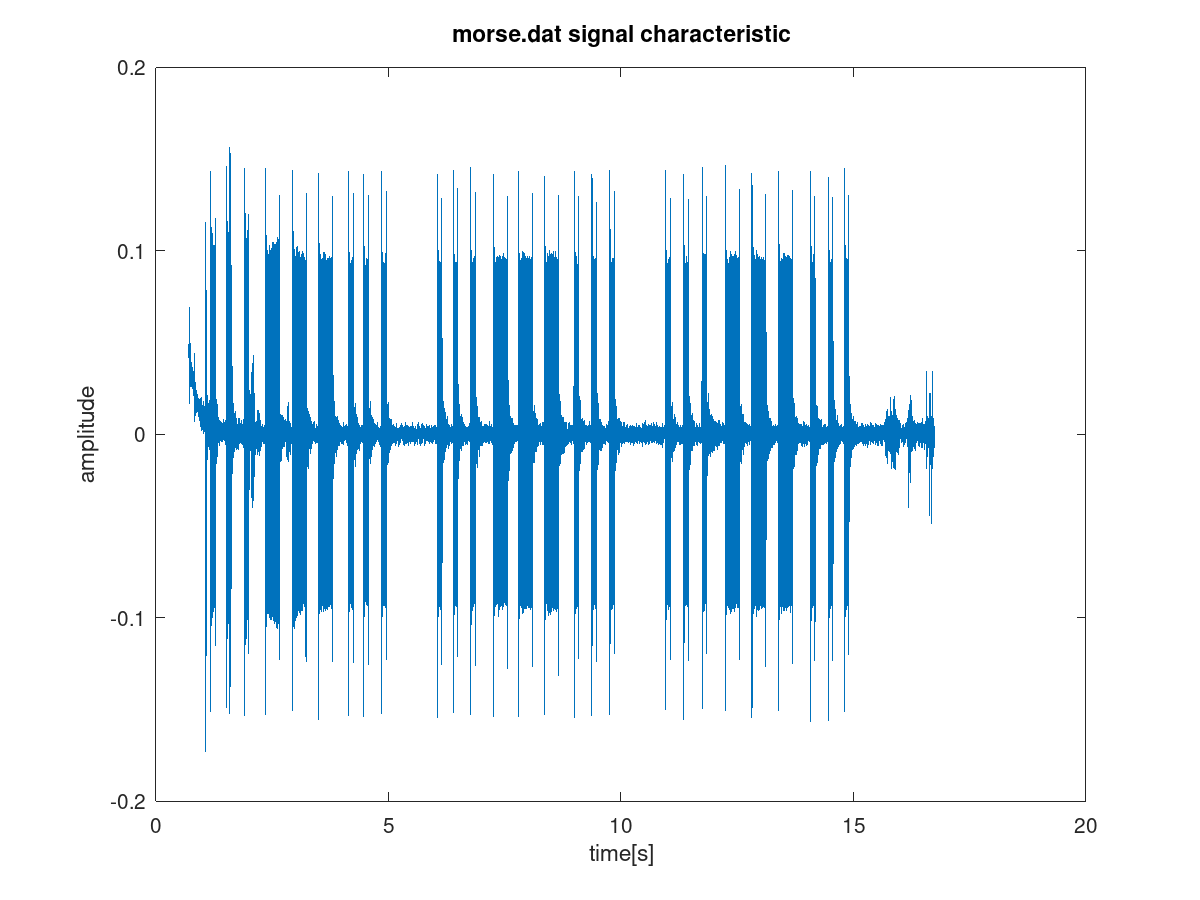Introduction
After 3 weeks of trying to setup Kubernetes + Nextcloud + static website in Minikube I decided to take a little break and focus on some Bash. The project I decided to make is as simple text to Morse [5] [4] script
Morse Beep Bash
The code is pretty easy to follow. First, I make reqular expression substitution for every letter of alphabet and numbers from 0 to 9.
I also need some specyfic characters to escape spaces, in this case it’s character s. For every regular expression I
need to end each Morse code character with some delimiter. I picked = so later I can pause signal generation when condition is true
After that my enhanced Morse code is piped to fold to end every character with new line and then again piped to xargs which
invokes ffplay [1] that plays sine sound for specyfic period of time or use sleep when break is needed
#/bin/sh
# dit - 0.1s
# dah - 3 * dit = 0.3s
# spacing between inter elements of Morse code - 1 dit
# space between letters = 3 dits
# space between words = 7 dits
sed \
-e 's/a/.-=/g' \
-e 's/b/-...=/g' \
-e 's/c/-.-.=/g' \
-e 's/d/-..=/g' \
-e 's/e/.=/g' \
-e 's/f/..-.=/g' \
-e 's/g/--.=/g' \
-e 's/h/....=/g' \
-e 's/i/..=/g' \
-e 's/j/.---=/g' \
-e 's/k/-.-=/g' \
-e 's/l/.-..=/g' \
-e 's/m/--=/g' \
-e 's/n/-.=/g' \
-e 's/o/---=/g' \
-e 's/p/.--.=/g' \
-e 's/q/--.-=/g' \
-e 's/r/.-.=/g' \
-e 's/s/...=/g' \
-e 's/t/-=/g' \
-e 's/u/..-=/g' \
-e 's/v/...-=/g' \
-e 's/w/.--=/g' \
-e 's/x/-..-=/g' \
-e 's/y/-.--=/g' \
-e 's/z/--..=/g' \
-e 's/1/.----=/g' \
-e 's/2/..---=/g' \
-e 's/3/...--=/g' \
-e 's/4/....-=/g' \
-e 's/5/.....=/g' \
-e 's/6/-....=/g' \
-e 's/7/--...=/g' \
-e 's/8/---..=/g' \
-e 's/9/----.=/g' \
-e 's/0/-----=/g' \
-e 's/\s/s/g' | fold -w 1 | xargs -n1 -I {} bash -c '[[ {} == "-" ]] && { ffplay -f lavfi -i "sine=frequency=1000:duration=0.3" -nodisp -autoexit; sleep 0.1; }; [[ {} == "." ]] &&
{ ffplay -f lavfi -i "sine=frequency=1000:duration=0.1" -nodisp -autoexit; sleep 0.1; }; [[ {} == "s" ]] && { sleep 0.7; }; [[ {} == "=" ]] && { sleep 0.1; }'Results
I recorded simple sos sos sos Morse code by using this script
echo "sos sos sos" | ./morse.shAnd recorded it to .wav file with arecord -vv -fdat morse.wav
As you can see it’s really easy to make yourself simple more code translator which will make sounds from your speaker
Morse code audio sample data extraction
In the very end of evening I decided to also play around a bit with .dat file which can be
produced from .wav
I really wanted to see the interval in which my Morse code plays "beep" sound and for that
first I used sox [2] program to extract data from .wav;
.dat from .wavsox morse.wav morse.datmorse.dathead morse.dat; echo '... HERE BIG CONTENT WHICH HAS: ' $(du -h morse.dat) ' ...'; tail morse.dat
; Sample Rate 48000
; Channels 2
0 0.99996948242 0.99996948242
2.0833333e-05 0.99996948242 0.99996948242
4.1666667e-05 0.99996948242 0.99996948242
6.25e-05 0.99996948242 0.99996948242
8.3333333e-05 0.99996948242 0.99996948242
0.00010416667 0.99996948242 0.99996948242
0.000125 0.99996948242 0.99996948242
0.00014583333 0.99996948242 0.99996948242
... HERE BIG CONTENT WHICH HAS: 41M morse.dat ...
16.749792 -0.0001220703125 -0.0014953613281
16.749813 -0.00076293945312 9.1552734375e-05
16.749833 0.00030517578125 0
16.749854 9.1552734375e-05 0.00076293945312
16.749875 0.00042724609375 -6.103515625e-05
16.749896 0.00030517578125 0.0020751953125
16.749917 0.0010681152344 0.00094604492188
16.749938 0.0018615722656 0.0021057128906
16.749958 0.0029296875 0.0013427734375
16.749979 0.0029907226562 0.0015258789062Data visualization
First I started with some GNU Octave [3] code that is plotting amplitude of Morse code signal
filename = "morse.dat";
skipped_rows = 34000;
skipped_columns = 0;
m = dlmread(filename, '' , skipped_rows, skipped_columns);
t = m(:, 1);
amplitude = m(:, 2);
plot(t, amplitude);
xlabel ("time[s]");
ylabel ("amplitude");
title ("morse.dat signal characteristic");
saveas (1, "morse-time-amplitude.png");This was really easy and as you can see clearly SOS SOS SOS was generated properly

Second one is a bit more interesting as it shows spectrogram of sound.
I love the end result of it. I generated sine wave with frequency of 1000Hz and on this
diagram you can clearly see SOS generated with 1kHz
sox morse.wav -n spectrogram
Cool huh?
Conclusion
This was a small cool project that made just to refresh a bit from dust from kubernetes cave
As always I highly recommend to play around with Bash. It’s such a flexible scripting language. I love to use it whenever I have an oportunity
In 2 weeks I’m going back to Polish remote university mode but at least now everyday I wake up in the Netherlands

Sources
[1] “Ffplay Documentation.” https://ffmpeg.org/ffplay.html
[2] “SoX - Sound eXchange | HomePage.” http://sox.sourceforge.net/
[3] “GNU Octave.” https://www.gnu.org/software/octave/index
[4] “Morse Code,” Wikipedia. https://en.wikipedia.org/w/index.php?title=Morse_code&oldid=1012730449, Mar. 2021
[5] Shouldaville - Shorts, “The Importance of Morse Code Spacing.” https://www.youtube.com/watch?v=OB1Kc4s0aNE, Mar. 2017
